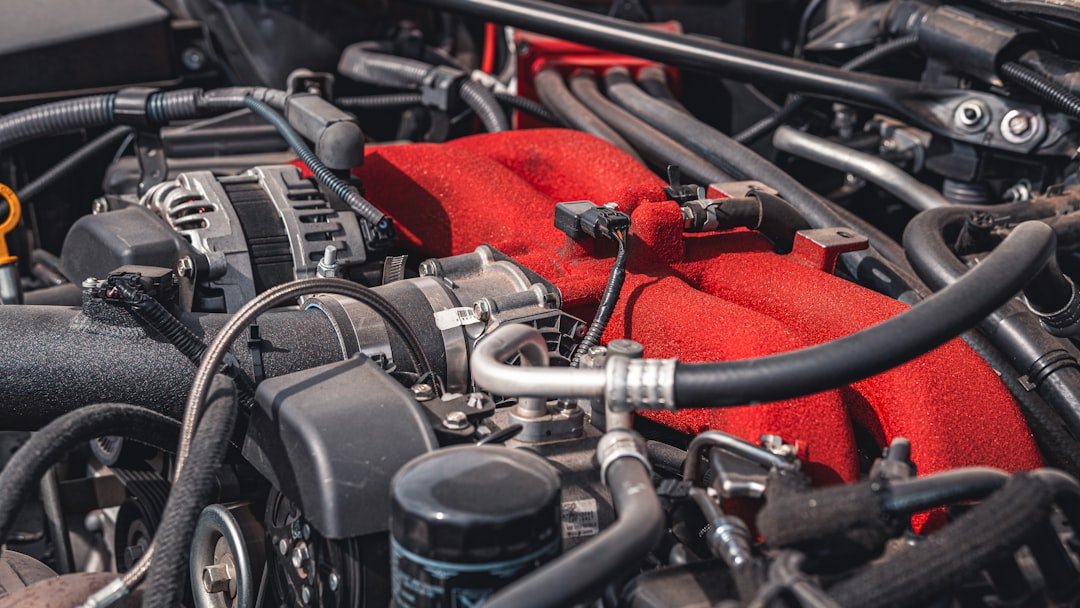Is Your Starter Bad? Here’s How to Tell

An essential part of a car’s ignition system is the starter. Its primary job is to turn the engine on by engaging the flywheel and starting the engine. When the ignition key is turned, the starter, which is powered by the car’s battery, starts. Once activated, the starter motor turns the engine over with the help of electricity, starting the combustion process and enabling independent operation.
An effective starter is crucial to the overall operation of a vehicle because without one, the car cannot start. Usually found close to the engine’s bottom, the starter is positioned so that it can easily engage with the flywheel. A solenoid that aids in starting the starter motor when the ignition key is turned is one of the electrical connections that connect it to the battery and ignition system. The engine’s starter motor is a strong electric motor that is intended to produce sufficient torque to turn the engine over and start it. All things considered, the starter is essential to a car’s functioning, and any problems with it can cause serious difficulties getting the car started & running.
There are a few typical symptoms that point to a possible problem with a car’s starter. The vehicle not starting or starting slowly with a clicking sound when the ignition key is turned is one of the most obvious symptoms. When the starter motor does not turn over, this clicking sound frequently indicates that the starter solenoid is engaging. A bad starter can also be indicated by a grinding noise made when the car is trying to start; this indicates that the starter gear is not engaging with the flywheel properly.
Sporadic problems starting are another common indicator of a bad starter. This could show up as the car starting smoothly one day and having trouble starting the next. Drivers may find this inconsistent, but it’s frequently a glaring sign that there’s a problem with the starter. In addition, the starter is probably the problem if the car’s lights and electrical systems function properly but the engine won’t start.
| Signs of a Bad Starter | How to Tell |
|---|---|
| Engine Cranks Slowly | When you turn the key and the engine cranks very slowly, it could be a sign of a bad starter. |
| Clicking Noise | If you hear a clicking noise when you turn the key, it may indicate a faulty starter. |
| No Cranking | If the engine does not crank at all when you turn the key, the starter may be the culprit. |
| Burning Smell | A burning smell when trying to start the car could be a sign of a bad starter motor. |
Overall, drivers who are aware of these indicators may be able to spot possible problems with their starter and take the necessary steps to fix them. There are various techniques for testing the starter to make sure it is operating correctly. A voltage drop test on the starter circuit is one popular technique. In order to do this, try to start the car and use a multimeter to measure the voltage drop between the battery and the starter. A high voltage drop suggests resistance in the circuit, which may be brought on by a starter motor that isn’t working properly or by loose or corroded connections.
A bench test, which entails taking the starter out of the car and directly connecting it to a power source to check if it turns over correctly, is an additional technique for testing the starter. This will assist in identifying whether the problem is with the starter motor or other parts of the car’s electrical system. In addition, when trying to start the car, make sure the starter solenoid is receiving the correct voltage. This will help determine whether the electrical connections leading to the starter are malfunctioning. In general, testing the starter helps identify any possible problems and assess whether it has to be replaced or whether there are other underlying issues that require attention.
When it comes to problems starting a car, there are a few common misdiagnoses that can result in needless repairs and a waste of time and money. A prevalent error in diagnosis is determining that starting problems are invariably caused by a dead battery. Although a weak or dead battery can undoubtedly lead to starting issues, it’s crucial to take into account additional possible reasons like a damaged starter or improper electrical connections. The assumption that a malfunctioning alternator is the source of starting problems is another frequent misdiagnosis.
The alternator is in charge of charging the battery, but it has no direct impact on how the starter works. Usually, the starter or other parts of the ignition system are the cause of problems with starting. Also, it may be incorrect to assume that starting issues are the result of a malfunctioning fuel pump or fuel system problem. Although problems with fuel delivery can undoubtedly keep a car from starting, they usually have nothing to do with the starter’s functionality.
Determining the exact cause of the problem and preventing needless repairs require careful diagnosis of the initial problems. To make sure it’s done correctly and safely, replacing a bad starter requires multiple steps. To avoid any electrical hazards when working on the starter, disconnect the vehicle’s battery first. Finding and removing the vehicle’s old starter is the next step after completing this.
Usually, this entails removing the mounting bolts that hold the starter in place as well as any electrical connections. Examine the mounting surface for any damage or debris that might interfere with the installation of the new starter after the old starter has been removed. After doing this, the new starter can be installed by undoing the removal procedure and making sure that the mounting bolts are correctly tightened & all electrical connections are secure. It’s crucial to test the new starter’s functionality after installing it and reconnect the vehicle’s battery before trying to start the car.
This can verify that the new starter is operating properly and that everything has been installed correctly. Drivers can take a few precautions to guard against possible problems with their car’s starter. Cleaning & inspecting the starter’s electrical connections, such as the ground and battery terminals, on a regular basis is an essential first step. Ensuring that the connections are tight and free from corrosion can help prevent problems that could impair the starter’s performance and cause starting difficulties. Also, maintaining the battery of the car & keeping it in good shape can also help ward off possible problems with the starter. Testing & replacing old batteries on a regular basis can help prevent starting issues because a weak or dead battery can put extra strain on the starter and cause an early failure.
And last, considering the method of starting the car can also aid in avoiding possible starter problems. Reducing strain on the starter and extending its lifespan can be achieved by avoiding excessive engine cranking and making sure that all accessories are turned off when starting. It’s usually advised for drivers to get expert assistance from a qualified mechanic if they have problems with their car’s starter or if they don’t know how to identify or fix starting issues. A qualified mechanic will have the skills and knowledge necessary to correctly identify any problems with the starter & suggest any necessary replacements or repairs. Professional mechanics also have access to specific tools and equipment that can help with diagnosing and fixing starting problems, which makes fixing any starter-related issues simpler & more effective. In general, obtaining expert assistance for initial concerns can guarantee that any issues are precisely identified and resolved, resulting in a correctly operating car and drivers’ peace of mind.
If you’re having trouble determining if your starter is bad, you may want to check out this article on howtostart.digital that provides helpful tips and insights on diagnosing starter issues. The article, “Hello World: A Beginner’s Guide to Car Starters,” offers a comprehensive guide for car owners to understand the signs of a bad starter and how to troubleshoot the problem. It’s a great resource for anyone looking to learn more about their vehicle’s starting system.




